JEF United Chiba are a side in the J2 League, Japan’s second tier of football. After a narrow loss in the promotion playoffs last season, with Yoshiyuki Kobayashi in his managerial debut campaign, JEF will be looking to progress in the current season.
From set plays, JEF have scored four goals in the opening eight games of the season, which has amounted to 20% of their goal tally so far. Their ability to use screens to coordinate them with intentional runs into the space created by them has stood out early this season and has shown promising signs of a positive record from corner kicks which can be maintained throughout the season.
In this tactical analysis, we will look into the tactics behind JEF United Chiba’s offensive set pieces, with an in-depth analysis of the different screens they have used based on the opposition’s defensive structure. This set-piece analysis will also highlight some of the problems with their set-piece routines, such as their inconsistency with creating separation for attackers and overly ambitious planning for unrealistic corner execution.
Using Screens at the Far Side of the Six Yard Box
JEF have mostly come up against two different types of defensive setups in the opening games of the season so far. They have faced hybrid systems, with a mix of near-side zonal defenders and man markers, and have also come up against heavy zonal setups, where all of the six-yard box is protected but with fewer man markers used.
Against hybrid systems that leave space at the far side of the six-yard box, JEF have attempted to exploit the space vacated by zonal markers by directly crossing the ball into that space, with screens used on the nearest zonal defender, preventing any defensive personnel from reaching the target area.
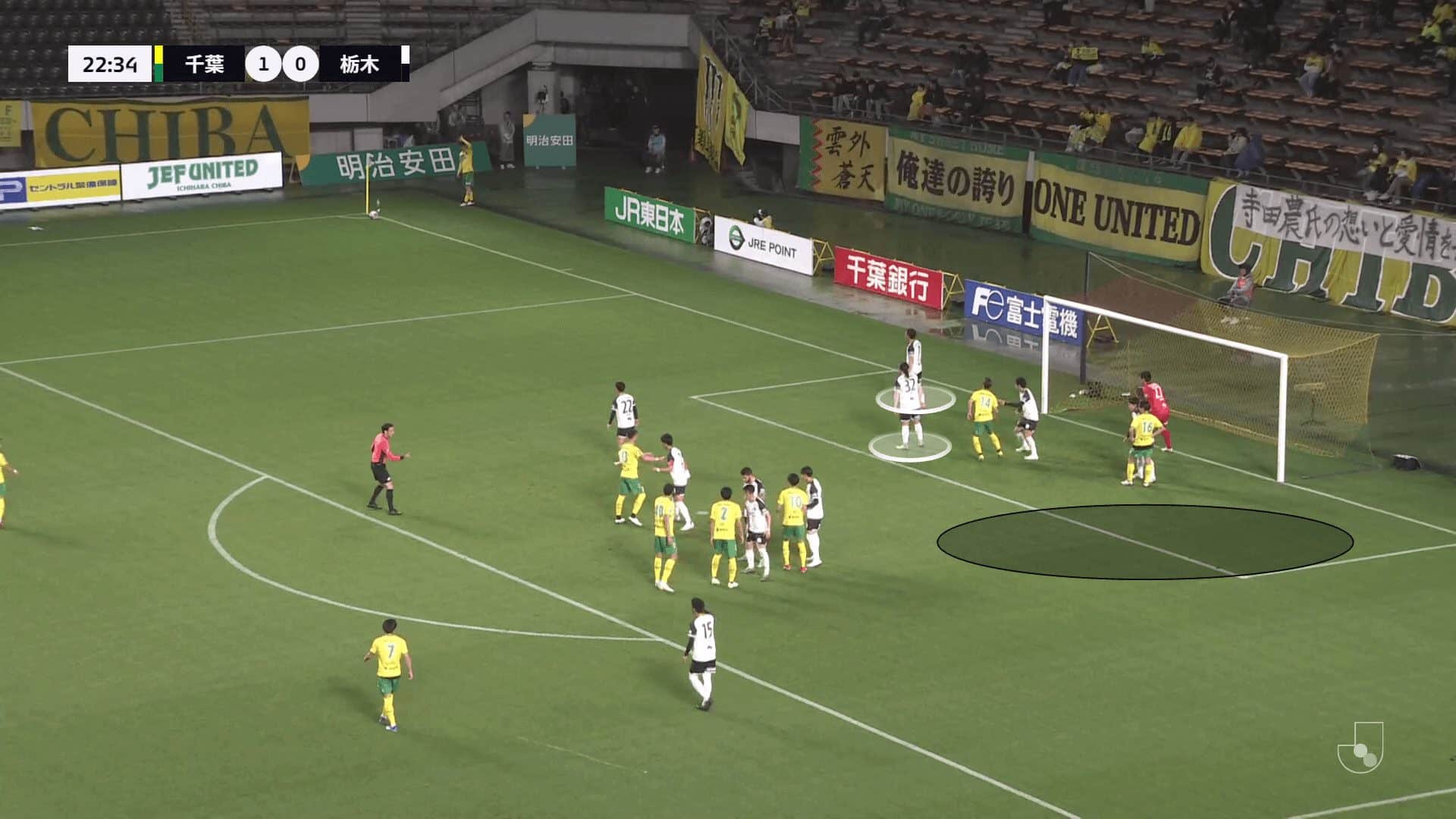
In some of the earlier corner kicks, the goalkeeper was able to easily come out and claim the floated crosses towards the back post because of the amount of time he had to read the flight of the ball. However, JEF have been able to quickly adapt their routine to include a screen on the keeper, to ensure this same mistake did not get repeated in later attempts.
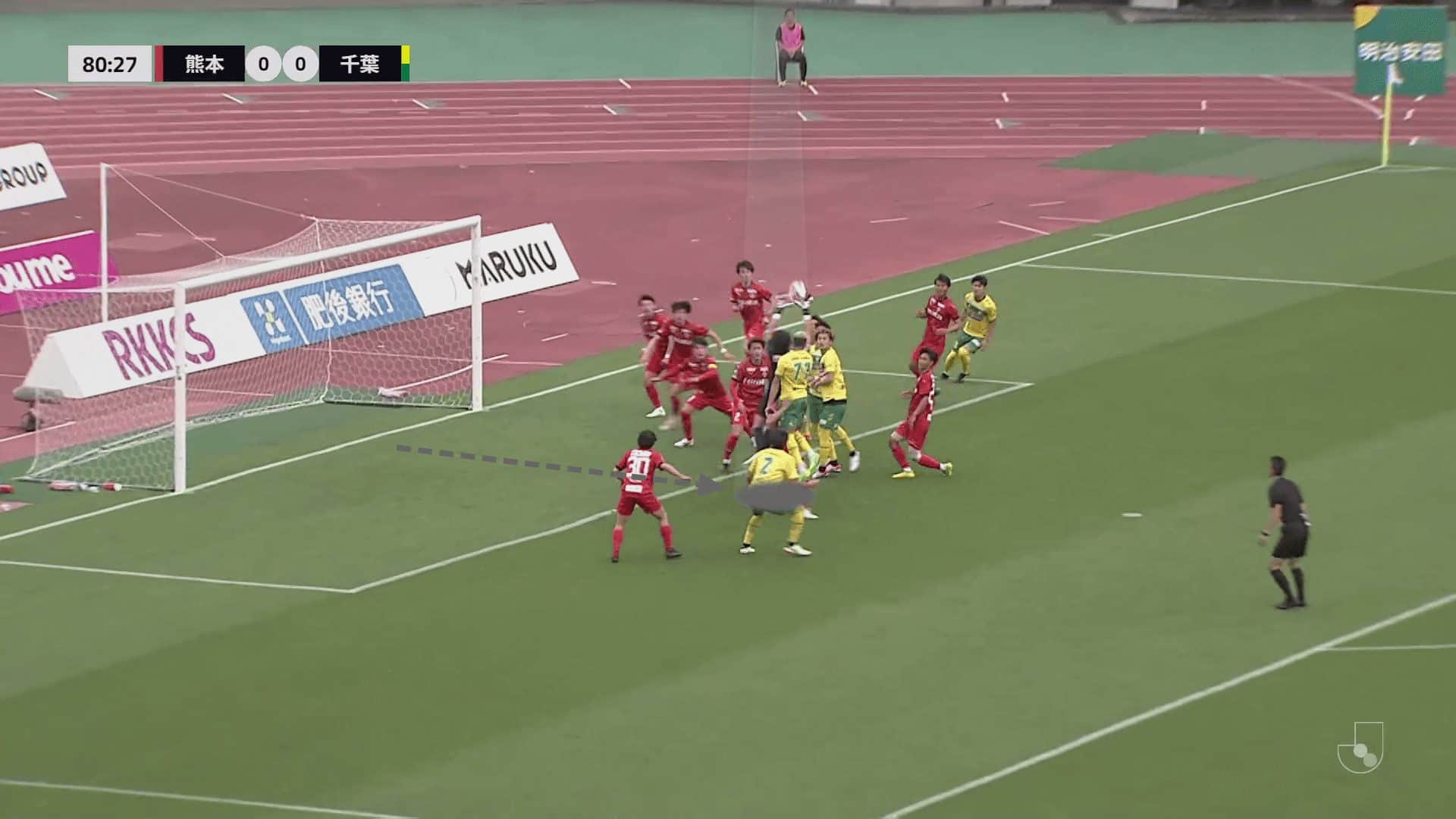
The two most common screens that have been used have been performed by the two attackers who start inside the six-yard box, who start in close proximity to their targets but only move to set the screen once the corner is about to be taken, not giving defenders any time to react to the screen and evade it. The screen on the zonal defender arrives from his blindside, meaning he can’t see it coming and evade it. The other screen is set on the goalkeeper to prevent him from claiming the cross.
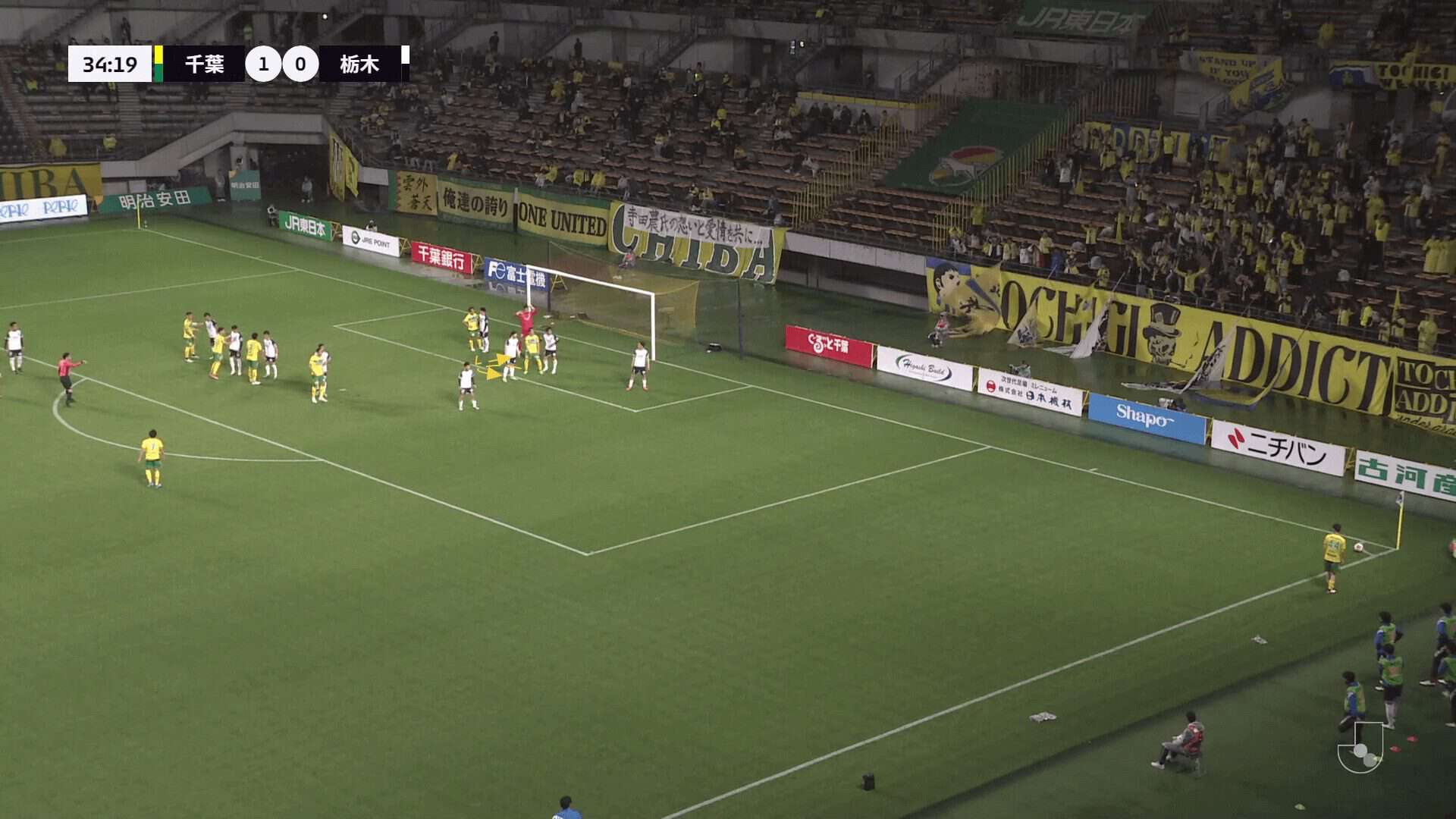
These two players have usually been marked, meaning that, through the use of two screens, four opposition players are being distracted/prevented from accessing the target area. The remaining zonal defenders are in positions too far from the back of the six-yard box to reach in time, and other man markers are distracted by other spare attackers.
Through the use of these screens, the ball is able to safely access the target area, while all that’s left is for the attacker to be able to arrive in space unopposed.
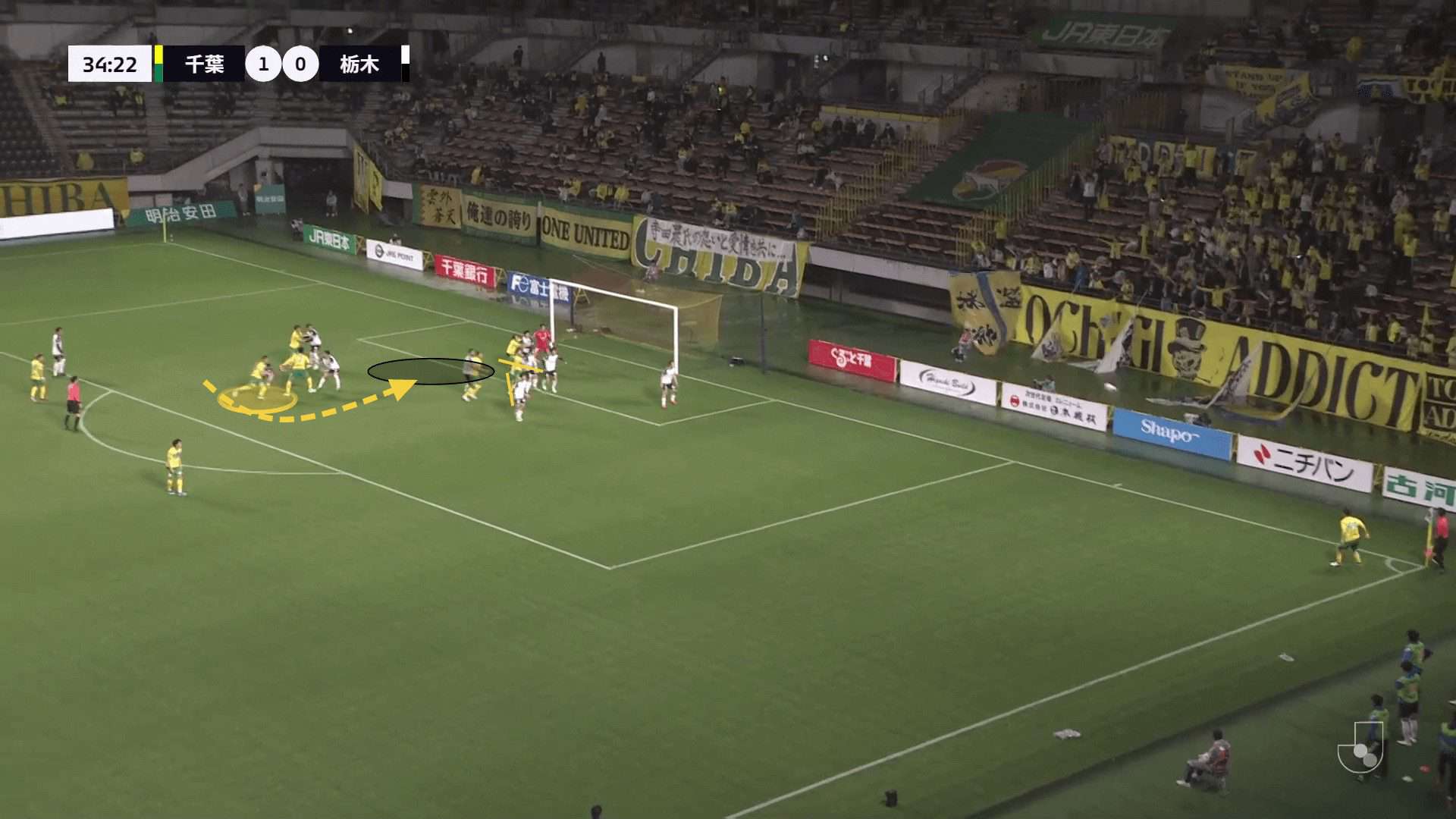
The deeper attacking unit usually consists of four players, but JEF have been inconsistent in the movements and methods used to create separation for one another. Players have experimented with different starting positions and runs made to create the space necessary, and this inconsistency is one of the things which has held them back from creating a higher number of high-quality chances from corners so far.
One method that has seen them gain success in their most recent fixture has been through the close starting positions of every player in the attacking unit, creating a cluster around the penalty spot.

Inside the cluster, we can see three pairings of attackers and their markers, meaning that when one attacker breaks off to attack the space at the back post, his marker has two other pairings in his way. The attacker making that run is the one originally furthest from the target area, which ensures that the other two pairs of players are in the way of the space the defender is trying to reach. The defender is unable to recover his position and catch up to the attacker due to the wall of players in his way, with one of the spare attackers also visibly moving into his path to ensure the path is blocked and prevent him from picking up speed.
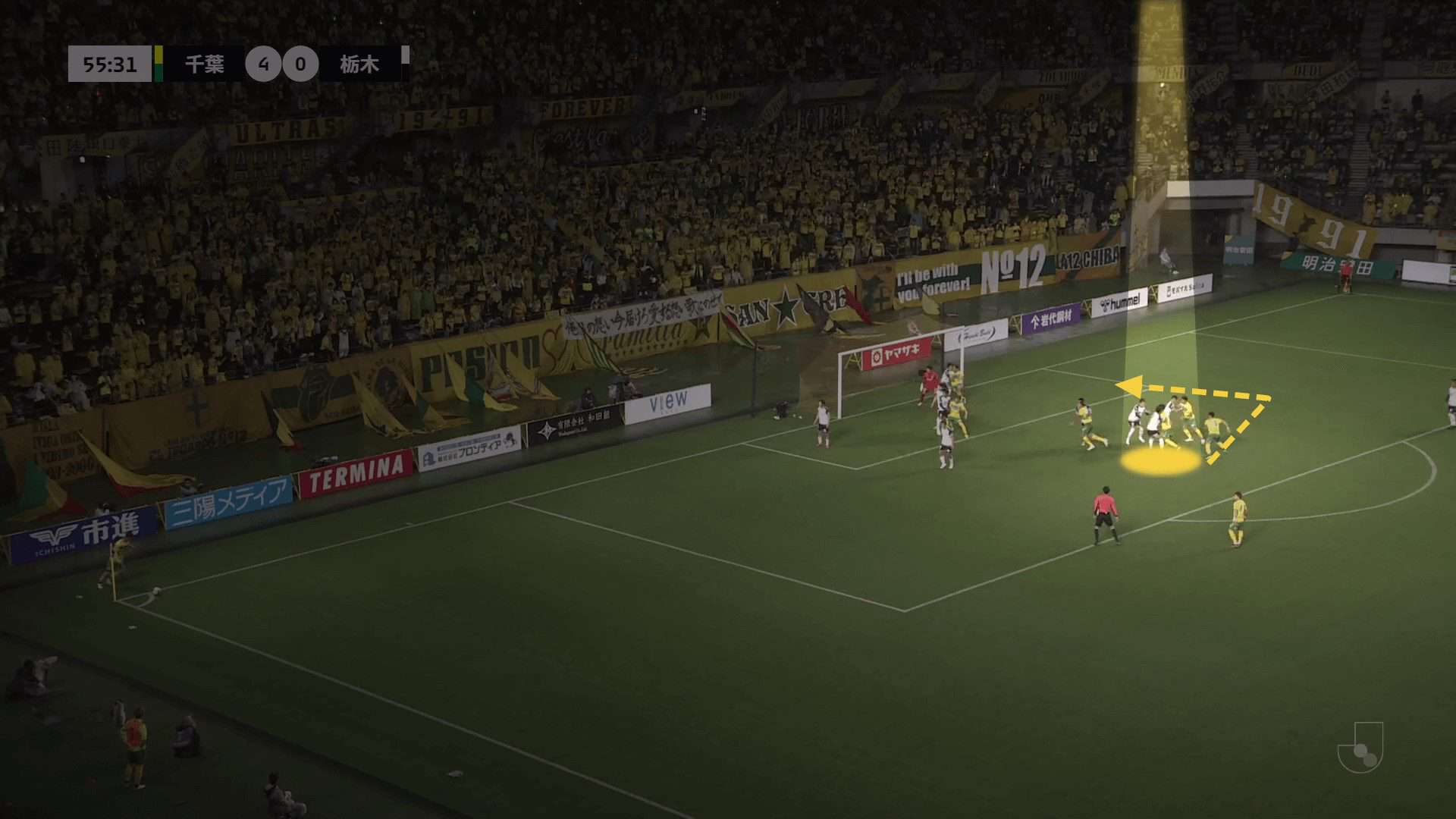
This method has allowed JEF to create a clear chance at the back post; however, on other occasions, it has been tougher for the attacker to header the ball due to the team’s inability to consistently create separation for the target attacker.
Although JEF are facing a purely zonal setup in the example below, we can still see space inside the six-yard box which is left unmarked. Yet again, the Japanese side aim to exploit this through the use of a screen on the nearest zonal defender, coupled with a block on the goalkeeper to ensure he cannot intercept the delivery.
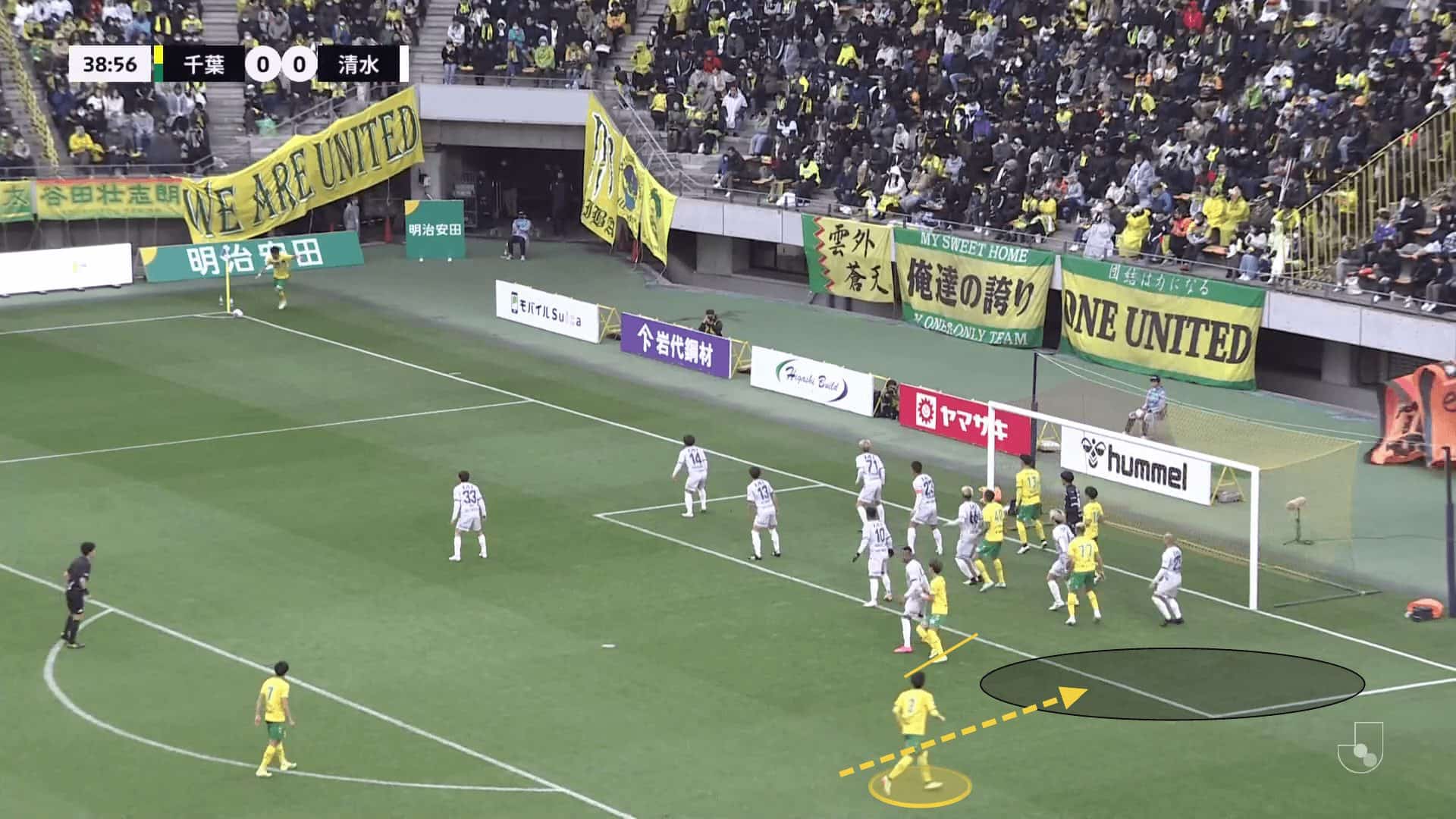
Another issue that JEF have had is their slightly rigid use of roles. They almost exclusively have used one screen on a zonal defender, but with the opponent using a different structure than in their previous corners, they fail to adapt to the fact that other zonal defenders are in a position close enough to react to the flight of the ball. While the nearest zonal defender has been blocked off, we can see a different defender entering the back side of the six-yard box after reacting to the cross. There is an attacker next to him, meaning JEF have a 2v1 advantage in that area, but they fail to make use of the extra player as the two attackers get in each other’s way, perhaps suggesting a lack of experience in dealing with this sort of situation. With an extra player, an additional screen could be used to allow the spare attacker to arrive unopposed.
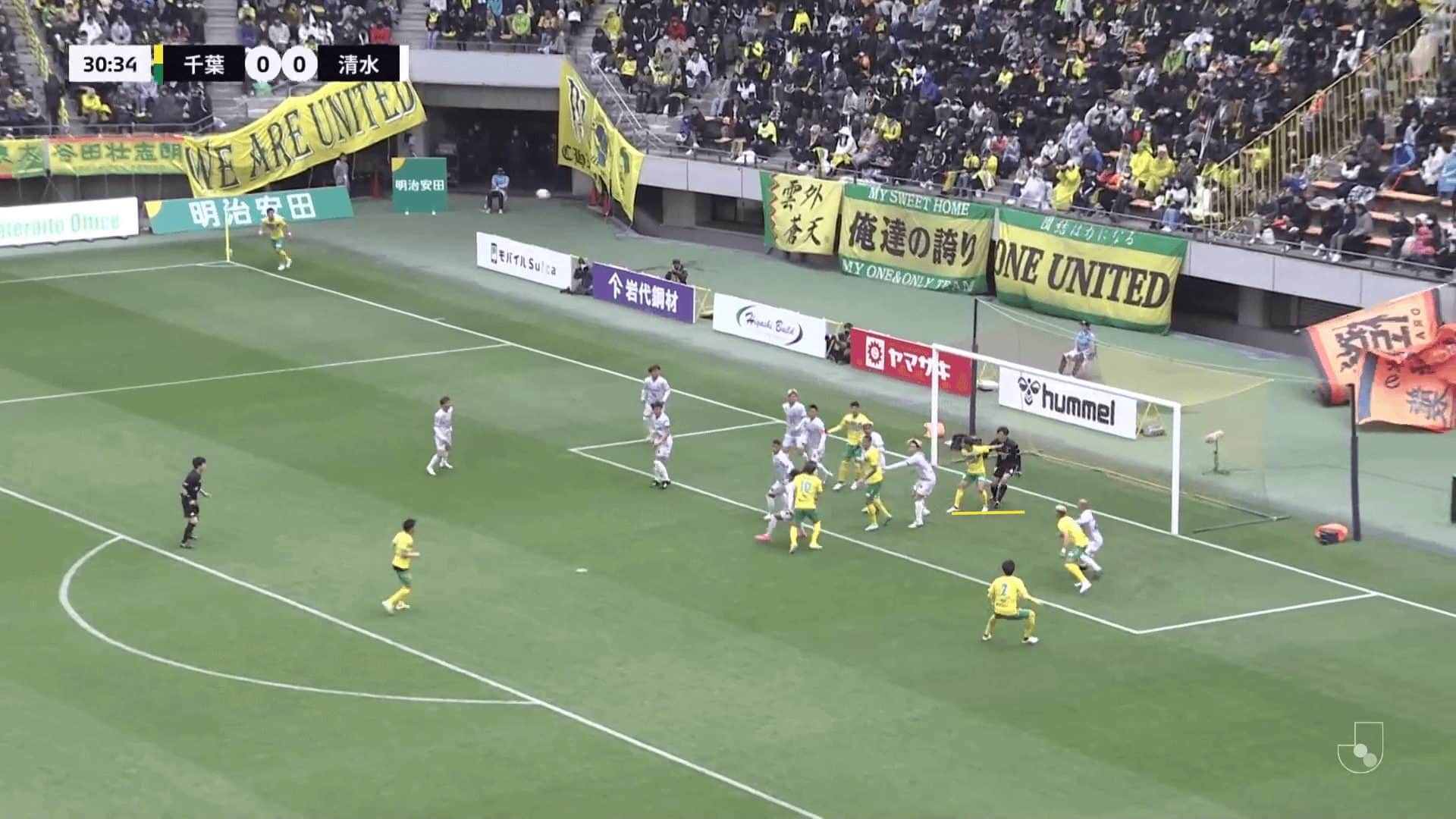
Attacking Heavy Zonal Setups
When facing zonal defensive setups, JEF continue to use two screens, with the two attackers starting inside the six-yard box. However, instead of one of these being used to block the goalkeeper, both screens are used on zonal defenders around the near side of the six-yard box. There is no threat of the goalkeeper claiming a flatter cross aimed at the near edge of the six-yard box, so the screen on him is irrelevant.
Yet again, the screens are effective due to the timing and angle of arrivals, but like in the previous example, the issue lies in not fully clearing the target space.
Inside the target area, there is an additional spare zonal defender who is free to attack the ball, meaning the cross cannot safely enter the target area.
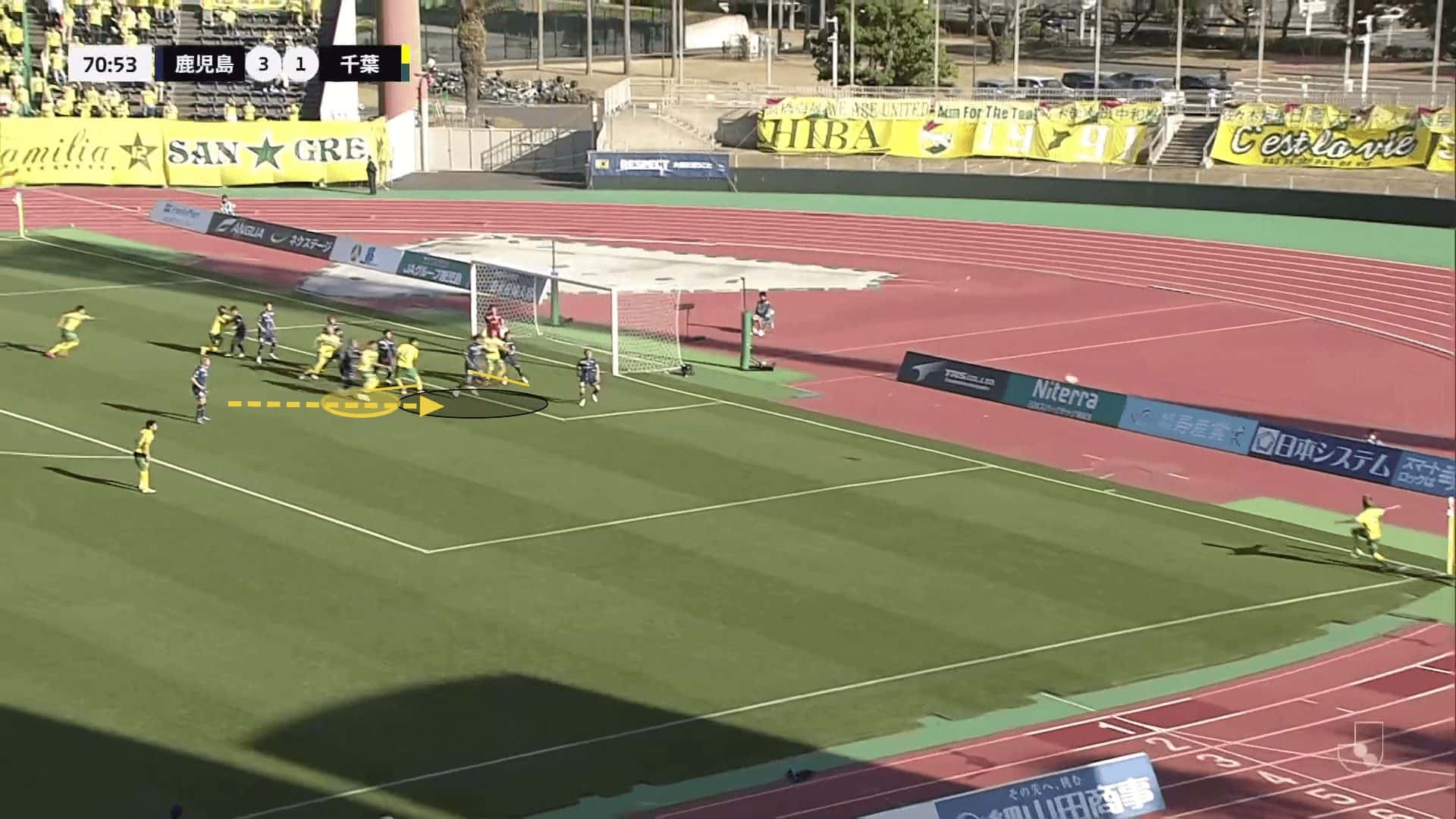
In addition to the failure to clear the target area, the corners that are aimed at the near side space are harder to precisely execute, meaning a lot of these corner attempts end up being under/overhit. With the two screens clearing up small gaps within zonal blocks, the crosses must be accurate as the other areas of the six-yard box are well covered with zonal markers.
One tool which has been used to beat the zonal markers in the air has been through increasing the length of the run-up to the target area, where players can generate more spring in the aerial duel, increasing their chances of winning the header. Against these defensive systems, the deep attackers are more likely to be unmarked and are, therefore, able to generate enough speed to dominate the six-yard box aerially.
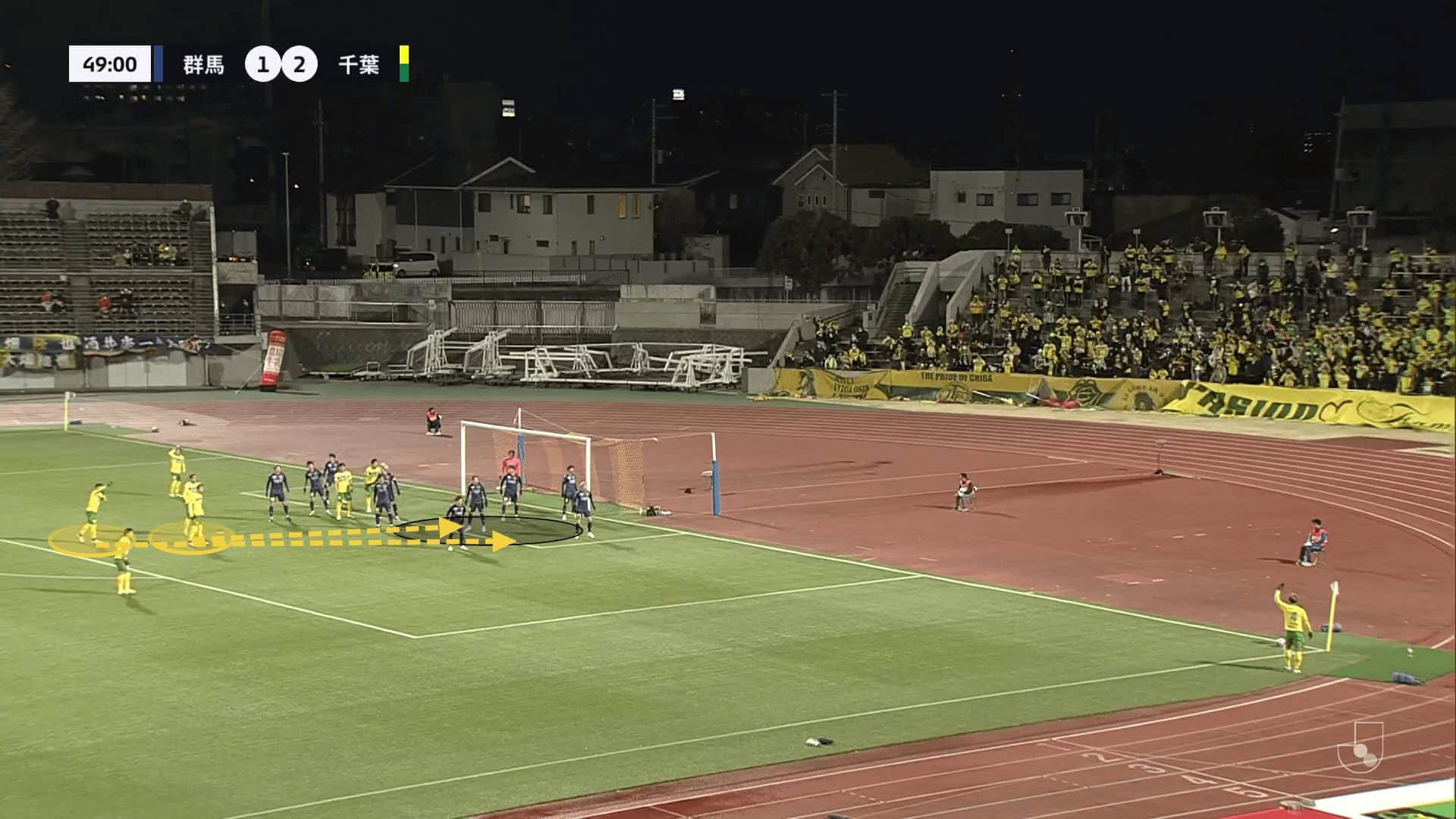
One alternative routine which has been interesting to watch has been through their intent to attack space on the edge of the box, when the zonal setup leaves the six-yard box heavily congested. Attacking space deeper is something that should be utilised more often, especially when the defensive side packs their six-yard box with 10 players, as in the example below.
Unopposed shooting opportunities from the edge of the box are still relatively high-quality chances, especially with the goalkeeper being unsighted due to the crowds of players in front of him, while there is also a big potential for a deflection, as was made evident in last night’s winner at the death in Chelsea‘s clash with Manchester United in the Premier League.
In order to maximise the time and space which the player on the edge has, the JEF attackers make runs toward the corner taker, across the front of the zonal defender’s view, to drag them away from the targeted area. The remaining attackers also make sure to position themselves to block the path of the other defenders, who could potentially step up and block the shot.
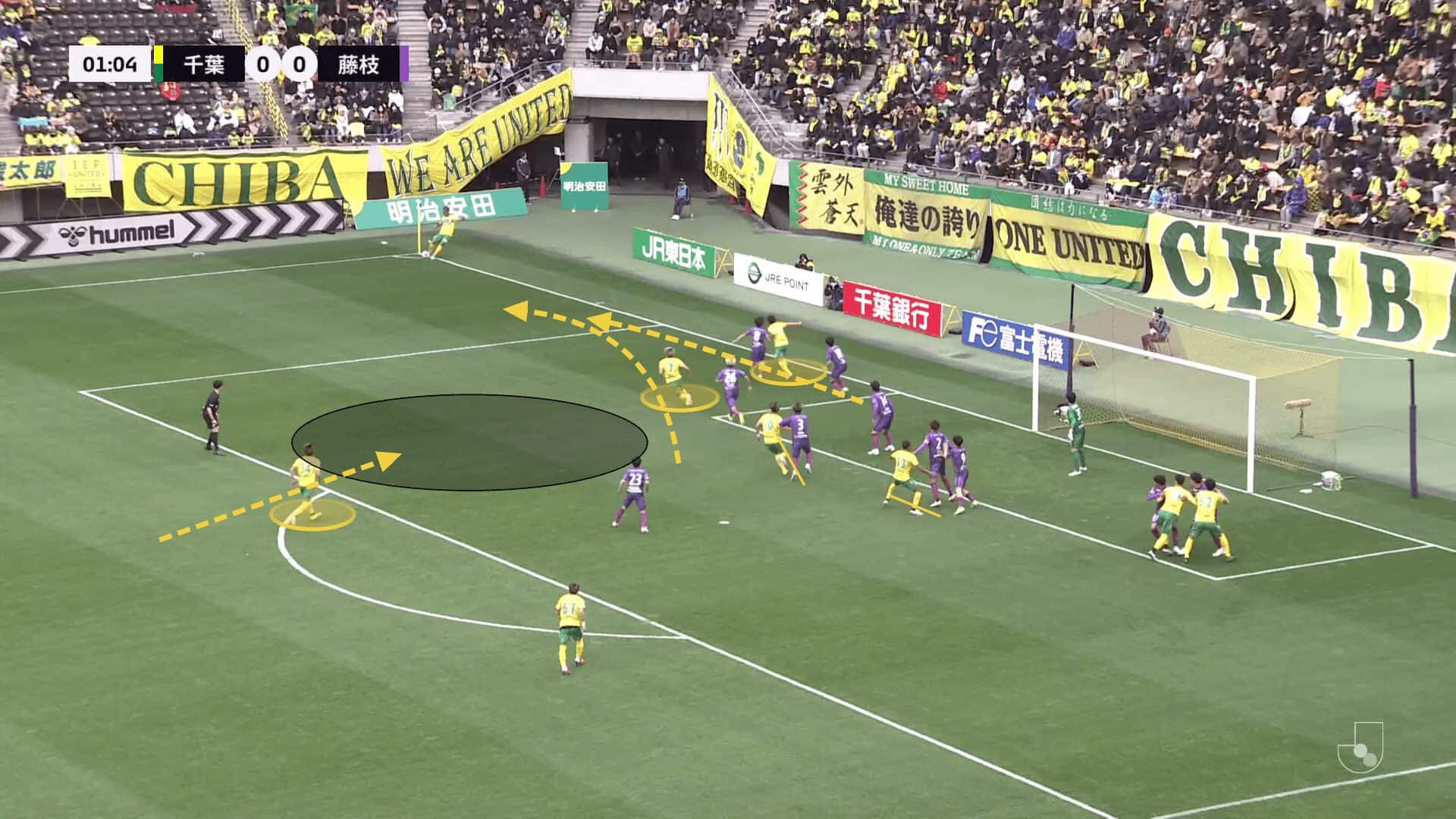
Summary
This tactical analysis has detailed the ways in which JEF have been able to be so threatening and achieve an average of a goal every other game, or once every 10 corner kicks. Their ability to include screens to ensure the ball safely arrives in certain zones has allowed them to create multiple high-quality goal-scoring chances, which is the reason behind their early corner kick success.
However, to maximise their efficiency from corner kicks, JEF need to ensure they have a consistent method of creating separation for attackers in the deeper unit when facing hybrid defensive systems. They also need to ensure that they can completely protect the target area when facing heavy zonal systems. Their success has come from players arriving in spaces unopposed, but those spaces are less available when facing zonal systems, suggesting they might have to increase the number of screens to completely seal off the target area from any defenders.






Comments